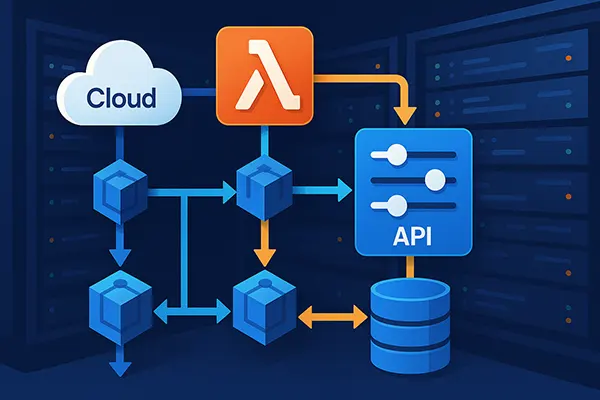AI Modules in Operating Systems: From Automated Configuration to Resource Optimisation

Artificial intelligence has moved far beyond research laboratories and consumer applications. One of the areas where its impact is increasingly visible is within modern operating systems. By 2025, both Windows and Linux have integrated AI-driven modules that streamline configuration, optimise resource allocation, and enhance the overall stability of computing environments. This shift reflects a growing demand for systems that are not only efficient but also adaptive, capable of learning from user behaviour and adjusting accordingly.
AI in Automated System Configuration
Modern operating systems no longer rely solely on static user preferences or generic defaults. With the help of AI, system configuration has become adaptive and context-aware. For instance, Windows utilises machine learning algorithms to automatically adjust settings based on patterns of use, reducing manual intervention and minimising errors.
Linux-based environments, especially those tailored for enterprise solutions, have adopted AI modules to configure network parameters, security policies, and performance profiles. This is particularly important in server environments, where efficient configuration can prevent costly downtime and enhance security.
Another critical aspect of AI-driven configuration is accessibility. By analysing user input methods, screen preferences, and speech recognition patterns, AI ensures that devices remain inclusive and tailored to diverse user needs without requiring extensive manual setup.
Real-World Impact of Automated Configuration
In corporate settings, IT teams benefit from reduced configuration time and fewer errors during deployment. AI-powered assistants in Windows 11 Pro and enterprise Linux distributions streamline large-scale installations by predicting optimal default settings.
For home users, the integration of AI eliminates the complexity of system setup. Voice recognition systems automatically calibrate microphones and optimise background noise filtering, while display adjustments adapt to lighting conditions in real time.
These improvements not only save time but also create more reliable environments, where users can begin working productively without the traditional overhead of extensive manual configuration.
AI in Resource Management and Optimisation
One of the biggest challenges for any operating system is balancing performance with efficiency. AI modules embedded in Windows and Linux address this by analysing workload patterns and allocating CPU, GPU, and memory resources intelligently. This enables smoother multitasking and ensures critical processes maintain priority over background tasks.
Energy consumption has also become a major focus. AI tools regulate power usage by predicting when high performance is required and when systems can enter low-energy states. This is especially important in data centres, where energy efficiency translates directly into reduced costs and environmental impact.
Furthermore, adaptive cooling strategies powered by AI prevent overheating in laptops and servers. By predicting workload spikes, systems activate cooling fans or adjust voltage levels proactively, ensuring both stability and extended hardware lifespan.
Practical Benefits for Users and Organisations
For individuals, AI-enhanced optimisation means that laptops last longer on battery, gaming performance remains stable, and applications load more quickly. This directly improves the day-to-day user experience without requiring technical expertise.
Organisations benefit from reduced operational costs. Data centres running AI-optimised Linux distributions can cut electricity consumption by as much as 15%, while maintaining peak performance for essential workloads such as database queries or virtualisation services.
Additionally, developers gain access to APIs that allow them to integrate AI resource management into applications, making the entire software ecosystem more efficient and responsive to user needs.

AI in Updates, Security, and Predictive Maintenance
Operating system updates have long been a source of frustration due to downtime and unexpected restarts. AI-driven scheduling in 2025 has reduced these issues significantly. Systems now predict the best times to apply updates, ensuring minimal disruption for both individual and enterprise users.
Security is another area where AI makes a decisive difference. By monitoring system behaviour in real time, AI modules detect anomalies that may indicate malware or unauthorised access attempts. Unlike traditional signature-based detection, these systems adapt to evolving threats instantly.
Predictive maintenance is also emerging as a defining advantage. By analysing system logs, hardware diagnostics, and usage trends, AI predicts potential failures before they occur. This allows IT teams and individual users alike to take preventative action, reducing the risk of data loss or prolonged downtime.
Future Outlook of AI in Operating Systems
The next phase of AI in operating systems is expected to expand towards fully autonomous maintenance. This would mean not only predicting issues but also automatically repairing corrupted files, reallocating system resources, and applying security patches without user intervention.
As quantum computing and edge computing continue to evolve, operating systems will need even more sophisticated AI modules to manage distributed resources across networks. Early adoption of such features is already evident in experimental Linux builds tailored for cloud-native environments.
Ultimately, AI is transforming operating systems into adaptive, self-regulating environments. This benefits everyone—from casual users seeking simplicity, to enterprises requiring scalable, secure, and resilient computing infrastructures.
Popular topics
-
 High-Performance Networking...
High-Performance Networking...High-performance networking has become a core requirement for modern …
-
 Edge AI and TinyML: How Int...
Edge AI and TinyML: How Int...Edge-level artificial intelligence has become one of the most …
-
 How to Programmatically Bui...
How to Programmatically Bui...Creating a flexible and efficient microservices ecosystem in 2025 …
-
 The Role of Artificial Inte...
The Role of Artificial Inte...Artificial intelligence has become a practical component of gambling …
-
 Virtual and real hosting, w...
Virtual and real hosting, w...Today, many providers offer virtual servers where you can …
